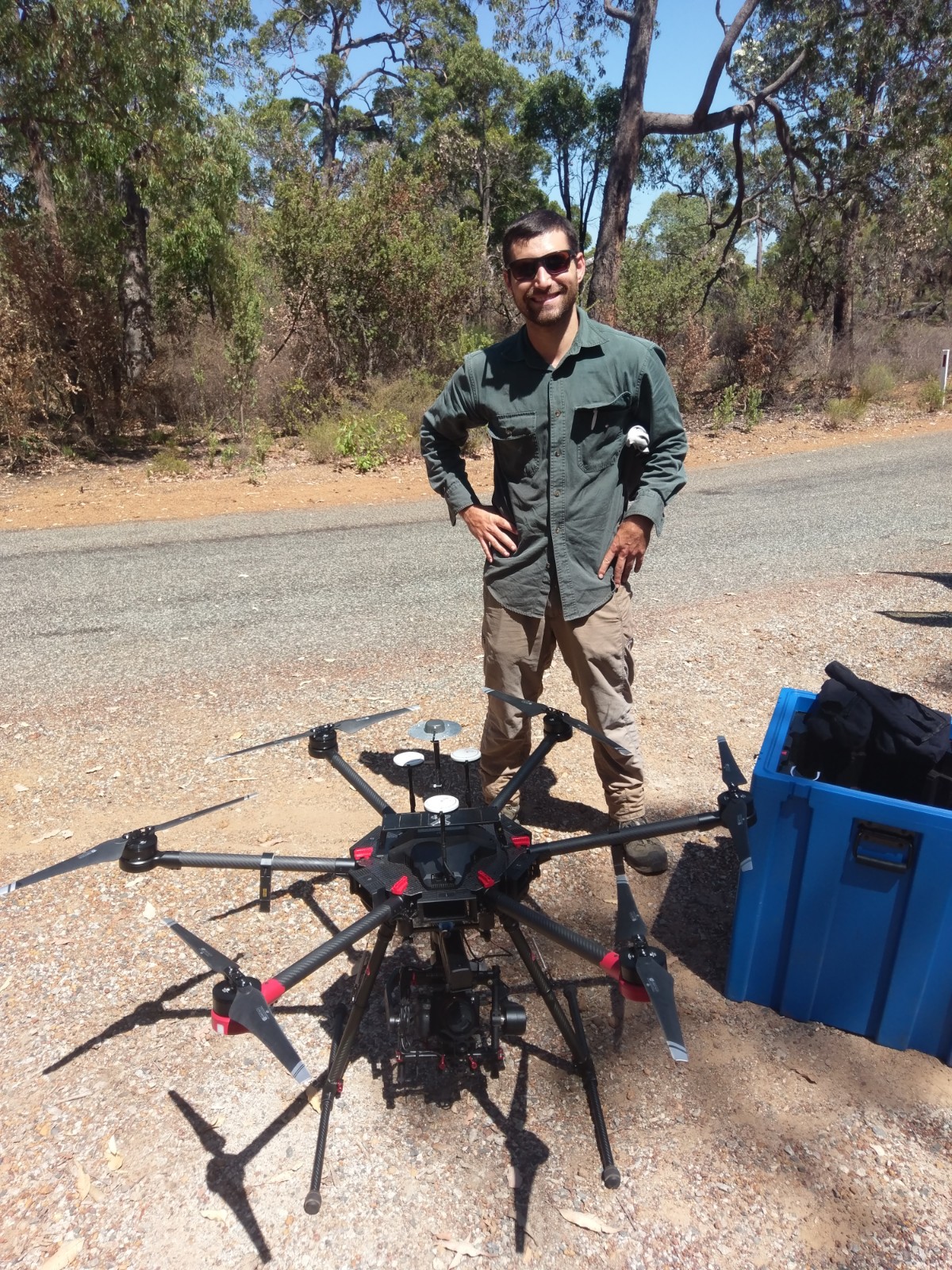State-of-the-art satellite imagery gave The University of Western Australia postgraduate student Daniel Dixon the ultimate birds’ eye view for his latest research with the CRC for Honeybee Products.
Mr Dixon is passionate about using remote sensing (such as drone technology and satellites) and geospatial tools to answer questions about environmental health and food security.
For his recent paper, Mr Dixon and fellow UWA researchers Associate Professor Nik Callow, Dr John Duncan, Associate Professor Samantha Setterfield and Dr Natasha Pauli developed a model for detecting flowering eucalypt canopies over large areas with satellite imagery.
The research was done in 2019 and 2020 at field sites in the Northern Jarrah Forest including Mundaring State Forest and John Forest National Park.
 Image: Daniel Dixon with one of the research drones.
Image: Daniel Dixon with one of the research drones.
“This research greatly relied on both drone and CubeSat imagery,” Mr Dixon said.
“Drones allowed us to quantify flowering events on specific dates and locations with high resolution RGB imagery.
“These data then informed the CubeSat daily image time series to make maps of flowering over the course of the summer. Additionally, because the model works at the satellite level, we could monitor flowering across large areas and into the past with the satellite archive.”
Mr Dixon said the larger objective was to understand the drivers behind flowering, which includes forest responses to climate change and other activities such as fire.
“Wildfire and prescribed burning, for example, are common events in WA forests, but it’s mostly unknown how fire impacts flowering of various species,” he said.
“By studying the drivers of flowering, we aim to also improve our understanding of forest management, biodiversity and beekeeping in southwestern Australia.”
Mr Dixon first got involved with honey bees and quantifying bee flora while studying for his Master’s degree at the University of North Dakota in the USA, where he studied grasslands, land use change and impacts on pollinators.
His PhD thesis ‘Understanding environmental drivers of flowering events with remote sensing’ is expected to be submitted in early 2022.
